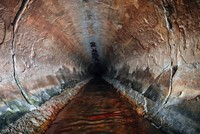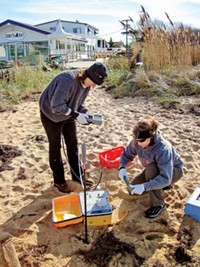Advertisement
Grab your lab coat. Let's get started
Welcome!
Welcome!
Create an account below to get 6 C&EN articles per month, receive newsletters and more - all free.
It seems this is your first time logging in online. Please enter the following information to continue.
As an ACS member you automatically get access to this site. All we need is few more details to create your reading experience.
Not you? Sign in with a different account.
Not you? Sign in with a different account.
ERROR 1
ERROR 1
ERROR 2
ERROR 2
ERROR 2
ERROR 2
ERROR 2
Password and Confirm password must match.
If you have an ACS member number, please enter it here so we can link this account to your membership. (optional)
ERROR 2
ACS values your privacy. By submitting your information, you are gaining access to C&EN and subscribing to our weekly newsletter. We use the information you provide to make your reading experience better, and we will never sell your data to third party members.
Environment
Viruses Infiltrate Municipal Wells
Water Pollution: The viruses found in drinking water can originate from leaky sewage systems
by Steven C. Powell
September 16, 2010

Small communities often pump well water straight from the ground to kitchen sinks without any disinfection. Now a new study in Environmental Science & Technology points out a shortcoming of this practice. Researchers report that viruses can seep from leaky sanitary sewer drains into municipal wells (DOI: 10.1021/es100698m).
About half of U.S. drinking water comes from groundwater, either from small, private wells or large, municipal ones. Public utilities must test the water in their distribution network for the presence of coliform bacteria, which indicate fecal matter contamination somewhere in the system. If coliform levels exceed federally mandated thresholds, the utilities have to issue a "boil your water" alert.
However, utilities do not screen routinely for viruses in drinking water, although they are definitely present: Recent surveys "found viruses in about a third of municipal wells in the U.S.," says environmental microbiologist Chuck Gerba of the University of Arizona, Tuscon. Viruses can be as small as 20 nm in diameter and therefore can easily pass through the soil, sediments, and rock that filter out bacteria as aquifer water flows into municipal wells.
Researchers have suspected that leaky sewer lines are one source of these viruses, Gerba says. So hydrogeologist Randy Hunt of the U.S. Geological Survey, microbiologist Mark Borchardt of the U.S. Department of Agriculture, and colleagues set out to verify that theory.
The scientists focused on three community wells in Wisconsin for which surface water contamination could be ruled out. They measured virus levels with quantitative reverse-transcriptase PCR (qRT-PCR) and compared the data with assays for several dozen chemicals indicative of wastewater, such as the detergent metabolite 4-cumylphenol and the flame retardant tributyl phosphate.
Hunt and his team found that every virus-positive well and aquifer sampling site also contained traces of tell-tale wastewater chemicals at some point during the study. This correlation "demonstrates that sanitary sewers can be a source of viruses in drinking water," Hunt says.
The researchers provide "the first direct evidence that leaking sewer lines are probably a major contributor to viruses in municipal wells," says Arizona’s Gerba. And the viruses are not innocuous, he adds: "The adeno- and noroviruses found in the study can cause diarrhea, for example."
Hunt says the data serve as a warning. "Because sanitary sewers are commonly located near drinking water wells," he says, "we need to assess the condition of the sewer infrastructure to understand a well’s vulnerability to virus contamination."




Join the conversation
Contact the reporter
Submit a Letter to the Editor for publication
Engage with us on Twitter